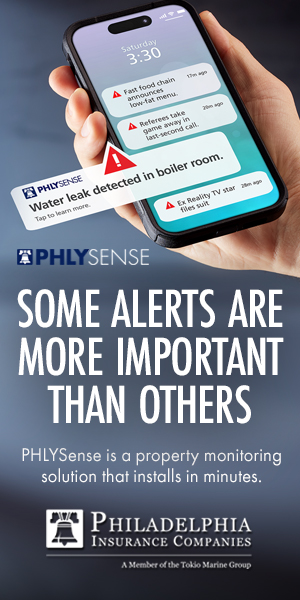Employee engagement goes deeper than having
employees who are happy and believe in an organization
After you’ve asked for input, always acknowledge it.
It’s so important to let people know they’ve been heard.
By Kari Glennon
If you’re an insurance agency owner, I’m sure you’re aware that many of your greatest assets are intangibles, such as your reputation, your book of business and your “good will.” But did you know that the agencies with the highest Return on Assets (ROA) are those with the highest number of actively engaged employees? By comparison, those with the lowest employee engagement numbers generally have greater turnover, fewer satisfied customers and lower profitability.
That’s why it’s difficult to understand why so many agencies are inconsistent when it comes to employee engagement. Perhaps they don’t realize the effect it has on their current productivity and future prosperity.
Remember The Great Resignation? Now Gallup has come up with a new term: The Great Detachment. This occurs when employees decide that if the job market is weak, they’ll stick with their current employer until something better comes along, which only enhances their feelings of disconnection.
According to Gallup’s annual State of the Global Workplace Study, employee engagement in North America reached an 11-year low in 2024. Their stats indicate that:
- 70% of workers are disengaged. That’s up from 67% in 2023.
- 51% have quietly quit. We’ve all heard about the impact of the quiet quitters. The good news is that they are still doing their job, but barely. They’re coasting and doing as little as possible. While they aren’t necessarily negative, they’re also not contributing all that much. In terms of retention, these folks are at risk.
- 77% of voluntary leavers either left after three months of searching or were actively seeking a new job when they were approached by headhunters.
- 41% of employees leaving jobs cite engagement and culture as the primary reason. They’re looking for better opportunities, although they can be persuaded to stay.
- 16% have loudly quit. Employee engagement pros refer to these people as corporate terrorists! They speak loudly and negatively about the organization and cause considerable disruption within the office. Outside the office, they tell anyone who will listen how much they dislike their job. It’s likely they are seeking employment elsewhere as I write this. They need to go ASAP!
Keep in mind that disengaged workers cost businesses $8.8 trillion globally in lost productivity. You need to find out what’s going on with them so you can keep them. Otherwise, when they leave, you lose their goodwill, their knowledge, the trust of their customers, and their relationships with co-workers. You also lose money.
Turnover is a huge cost for organizations. The amount of time, effort and money that companies pour into new employees is significant. To invest all that into individuals only to have them leave because they don’t feel any sort of attachment or loyalty to the organization is a tremendous loss, internally and externally. It’s much more positive and cost effective to commit to an employee engagement program or process.
Nurturing engaged employees
Employee engagement goes deeper than having employees who are happy and believe in an organization. Actively engaged employees feel connected to their organization and have a sense of camaraderie with their work family. Employees who work eight or more hours a day, Monday through Friday, spend more waking hours with their colleagues than with their family and friends outside of the work environment. So, if you have employees who are not engaged with the organization and the team they work with, they are not going to thrive or be happy.
Ever since the pandemic, there’s been increased emphasis on mental health and wellness in the workplace. Whether that’s had a positive effect is questionable. According to the latest North American Life Evaluation survey, well-being among young workers has continued to drop over the last two years. The statistics are troubling:
- 57% feel a lot of stress every day
- 17% have a lot of anger
- 22% feel sad a lot
- 69% think it’s a good time to find a new job
- 43% intend to leave their job
So why the dissatisfaction? In general, many employees don’t have a meaningful connection with their job or their employer.
Often, employers will say their employees are their number one asset but fail to share that information with them or show their appreciation. Employees who say they feel cared for by their employer are apt to report greater engagement and satisfaction than employees who feel unseen or insignificant on the job.
Also, too few employers treat their employees as if they’re key to the organization’s success, when in fact they are largely responsible for it. Do your employees feel engaged and appreciated? If not, you need to examine why they are disengaged and then find ways to prove that you value their contributions.
Exceeding expected benefits
Of the many things organizations can do to show employees they care, offering a desirable benefits package tops the list. Employee compensation isn’t just a weekly or semi-monthly paycheck, but their overall benefits package, as well. Typically, it includes health insurance, a 401(k) match, paid holidays, vacation time, and more. Employees have come to expect those things. This is a huge expense for most agencies. In fact, employee benefits generally are the second-largest line item on a budget next to payroll.
But what else can you offer above and beyond the basics? Often, it’s the small, simple things that make a big difference, for better or for worse. For instance, one organization always provides a bowl of healthy snacks for employees. However, I know of another agency that changed coffee vendors to save money, which almost cost them their workforce! Employees were infuriated because they had not been consulted about the new vendor (whose coffee they didn’t like).
Small changes may look good on a spreadsheet but if employees feel a major impact in their day-to-day work life, that small change may not be worth your team’s satisfaction.
What kinds of benefits do you offer? Are they what your employees want? Have you asked them? Unless you ask, you don’t know what’s important to them and why.
It’s incumbent upon leaders to provide an environment where employees feel appreciated, and their voices heard. At the same time, I urge you to never ask for employee feedback unless you intend to use it. It’s a slap in the face when someone makes a request that isn’t acknowledged. Often, employees are already suspicious when asked for input, even if they’re taking an anonymous survey.
After you’ve asked for input, always acknowledge it. It’s so important to let people know they’ve been heard. There’s nothing worse than not knowing if someone got your message, so even if you choose not to implement an employee’s recommendation, let them know you appreciate their ideas. Remember, feedback is a gift. If they’re willing to be honest, it’s up to you as a leader to do something with it.
Why bother?
In 2024, Gallup surveyed organizations with a consistent employee engagement process in place. In comparing the organizations with the top 20% and the bottom 20% employee engagement scores, Gallup found that those in the top 20% reported numerous benefits, including:
- 78% less absenteeism
- 51% less turnover
- 68% improved well-being
- 10% higher client loyalty. Renewable revenue is crucial for agency cash flow, profitability and valuation. Customers serviced by engaged people are more loyal and, therefore, more likely to refer you to others. Further, they’re usually willing to pay more for your services.
- 23% higher profitability
The independent insurance agency is no different from any of the types of businesses Gallup surveyed. The bottom line is the same: Engaged employees are good for business!
I realize that agency leaders have many things to do, but they really need to engage their team if they want their business to thrive.
In some ways, it’s like parenting. When my children were much younger, I needed someone to be with them while I was at work. I soon discovered that there’s a big difference between a nanny who watches children and keeps them safe, and one who gets down on the floor and plays with them! I didn’t want a babysitter; I wanted my kids to be enriched and engaged. The nanny I hired was terrific and has been like a member of our family ever since.
The same applies to agency leaders and employees. As a leader, how engaged are you with your employees? How frequently do you speak to them? Do you know their names? Do you know what they’d like to change at work? Do you know what their needs are?
You can hire someone to find out. There are companies that do nothing but employee engagement for insurance companies. If that sounds like a smart route to take, I encourage you to do so. In the interim, you can reach out to employees to connect with them and begin down the road of positive engagement.
Obviously, agency leaders have a fiduciary obligation to be profitable and grow each year. But it also is their responsibility to provide an atmosphere that helps their employees grow and become the best version of themselves professionally. They must be heard and appreciated for that to happen. As an agency leader, are you on board with that idea? You’re apt to miss the boat unless you have employee engagement on your radar.
The bottom line is: You don’t have a profitability problem; you have a people problem.
The author
Kari Glennon, senior consultant of Sitkins Group, Inc., has been a sales and marketing professional within the insurance industry for nearly 25 years. She has been an owner and partner of a firm, perpetuated her firm externally, and spent time as the chief sales officer for one of the largest middle-market insurance agencies in the nation. Her true passion is to deliver strategy, inspiration, insurance knowledge, and coaching for independent insurance agencies. To learn more, visit sitkins.com





